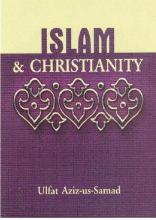Islam & Christianty

The Unreliability of the Gospels
The Gospels were composed after the early Christians had become divided into different factions. They were in fact composed to propagate the special teachings of the various schools. Thus, their authors showed no hesitation in tampering with the earlier documents and other traditional materials regarding the life and teaching of Jesus to bring them in line with the views of their schools. Rev. T. G. Tucker states:
"Thus Gospels were produced which clearly reflected the conception of the practical needs of the community for which they were written. In them the traditional material was used, but these was no hesitation in altering it or making additions to it, or in leaving out what did not suit the writer's purpose".[1]
The four Gospels included in the Bible were not the only Gospels written in the early centuries of Christianity. There were many others, including the one called "The Gospels according to the Hebrews", an Aramaic work which was used by the Nazarenes (as the early disciples of Jesus were called), who denied the divinity of Jesus and regarded him only as a great prophet. Towards the end of the second century the Gospels of Mark, Matthew, Luke and John were included in the Canon and the rest were declared to be heretical or apocryphal by the Church. Before they were canonized and accepted as scriptures, the Gospels did not have that sanctity which they have now and no one felt any compunction in altering them if anything contained in them did not suit his purpose or the purpose of his sect. Even after they were included in the Canon and declared to be the Word of God, changes continued to be made in them, as is clear from the different early extant manuscripts. Referring to this, Professor Dummelow from Cambridge writes in his famous Commentary on the Holy Bible:
"A copyist would sometimes put in not what was in the text, but what he thought ought to be in it. He would trust a fickle memory, or he would make the text accord with views of the school to which he belonged. In addition to the versions and quotations from the Christian Fathers, nearly four thousand Greek MSS of the Testament, were known to exist. As a result the variety of reading is considerable."[2]
In considering how far the four Canonical Gospels faithfully present the inspired message or Gospel of Jesus we must bear the following facts in mind: (1) that no written copy was made
of the inspired sayings of Jesus in his life time; (2) that the earliest records of the sayings of Jesus, which were made shortly after his departure, when the glorification of Jesus had already begun, have all been irretrievably lost; (3) that in the Gospels, which were written between 70 and 115 C. E. on the basis of some lost documents, the material contained in them was handled rather freely; the Gospel-writers felt no hesitation in changing it for what they considered to be the greater glory of Christ or to bring it in line with the views of their sects; (4) that none of the Evangelists had known Jesus or heard him speaking; (5) that the Gospels were written in Greek, whereas the language spoken by Jesus was Aramaic;(6) that they were composed to
propagate the points of view of the different factions and chosen from many others which represented different view-points, (7) that for at least a century after they were written they had no canonical authority and were actually changed by the copyists of the different sects to serve their own purpose; (8) that the earliest extant manuscripts of the Gospels - Codex Sinaiticus, Codex Vaticanus, and Codex Alexandrinus - belong to the fourth and fifth centuries, and no one knows to what extent the Gospels had been changed during the centuries of which no manuscript is available; (9) that there are considerable differences at many places among the various extant manuscripts of the fourth and fifth centuries; and (10) that the Gospels, taken as a whole, are full of contradictions.
These facts disclosed by distinguished Western scholars go to show that the Gospel of Jesus, by which we mean the Message which Jesus had received from God, has not reached us in its original form. The four Gospels included in the Bible cannot be considered identical with the inspired Gospel of Jesus. The manner of their composition and the circumstances through which they have passed are such that they cannot be relied upon to give us the exact knowledge of what Jesus had said and ~ taught. C. J. Cadoux sums up the position in these words in his book Life of Jesus.
"In the four Gospels, therefore, the main documents to which we must go if we are to fill-out at all that bare sketch which we can put together from other sources, we find material of widely differing quality as regards credibility. So far-reaching is the element of uncertainty that it is tempting to 'down tools' at once, and to declare the task hopeless. The historical inconsistencies and improbabilities in parts of the Gospels form some of arguments advanced in favour of the Christ-myth theory. These are, however, entirely outweighed - as we have shown - by other considerations. Still, the discrepancies and uncertainties that remain are serious and
consequently many modems, who have no doubt whatever of Jesus' real existence, regard as hopeless any attempt to dissolve out the historically-true from the legendary or mythical matter which the Gospels contain, and to reconstruct the story of ]esus' mission out of the more historical residue."[3]
[1] T.G. Tuncker: The History cj the Christians in the Light of Modern Knowledge, p.320.
[2] J.R. Dummelow: Commentary on the Holy Bible·, p.l6.
[3] C. J. Cadoux: op. cit., pp. 16,17.
